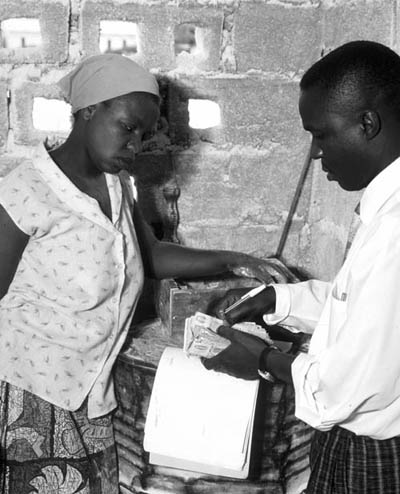A multi-sectoral, integrated extension network will be sustainable only if it proves to be cost-efficient and eventually attains cost recovery. Cost efficiency requires good, transparent management, quality control, and careful monitoring and regular evaluation. Good management requires good leadership and also human resources development that results in strict attention to both the organization of the partnership with other extension providers and the organization of public-sector staff and contracted institutions toward technical and group process training. However, training works only when there is motivation to learn as well as to make use of the training received. As with all services, cost is an important issue.
Public financing is critical at first, despite the trend away from subsidies and toward a variety of competitive and contractual mechanisms. In addition to competitive funding and contracting to private service providers, additional sources of funding may be tapped through community development funds, and eventually through user fees and cost sharing.
New funding mechanisms are defined in terms of the actors involved, the flow of funds and services, and conditionalities on use of funds. Most of these mechanisms combine empowerment of users with co-financing for specific services, e.g. member fees paid to farmer organizations and levies on agricultural production. While not immediately realizable with food-insecure populations, these funding mechanisms may be desirable as eventual end goals when and if they promote not only competition between service providers but also contractual relationships between the funding source and the service provider. Funding and accountability may be dramatically altered under these new mechanisms and put farmers in the driver’s seat.
Community-driven development funds also offer an opportunity for funding extension. Donors and some governments now provide a large share of support to agriculture through these funds. The process operates as follows: extension micro-projects at the community level are identified through participatory diagnosis involving agricultural staff and approved at that level by a selection committee with a majority of producers’ representatives. Producer organizations contract the necessary technical expertise to prepare the micro-projects and implement them with some co-financing from users.
In many developing countries, a mixture of funding and service delivery modalities involving both public and private sector will make sense. The governments may provide funding while the private companies and NGOs could deliver the extension services. Another modality: a part of the extension system may provide private, fee-based extension advice to commercial farmers and cooperatives while the other part may continue providing free extension advice to subsistence and poor farmers in support of food security - a public good.

A. Conti/FAO/17872